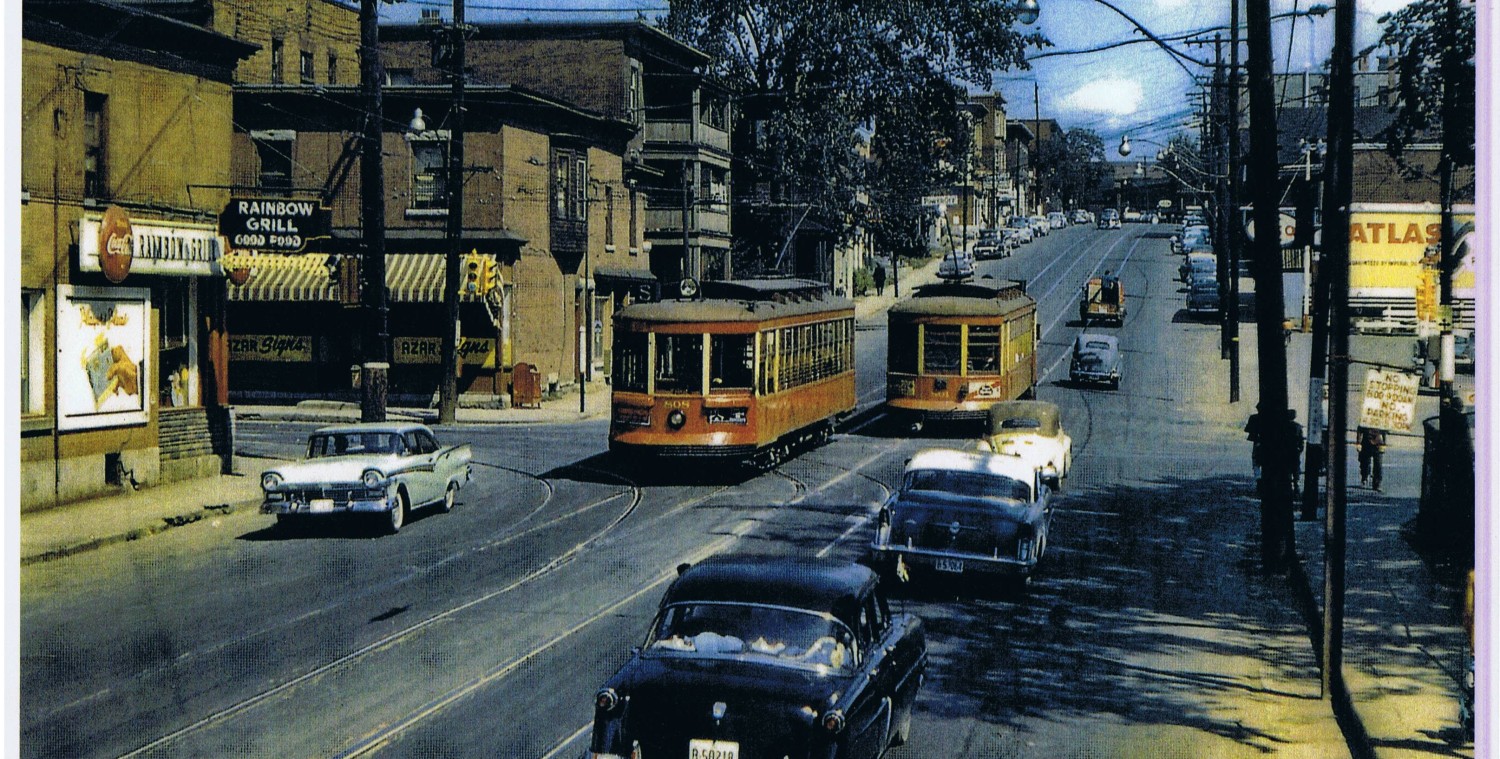The Bayview Station isn’t part of the original bus transitway; it didn’t exist until 2001. It was built because the experimental O-Train service, using the existing rail tracks, needed a transfer point for passengers. From day 1, city planners assumed it was only a transfer station from buses to train. Little or no walk in traffic was expected. Yet anyone frequenting the station notices a continual stream of people walking into the Station. They come from the office and industrial buildings on City Centre Avenue, the residential areas to the southeast and southwest. They have worn paths accross the fields to make their own direct access to the station. All these paths are indicators of how badly the planners misjudged the neighborhood demand for the station.
A few years back, the city was planning for the now-temporarily-abandonned North/South LRT route that would have gone from the downtown to Bayview and then south to Riverside and Barrhaven. They planned to simply close up the Bayview Station for several years during construction, because the O-Train would not be running. I challenged them to notice the walk in traffic; and demanded they measure the pedestrian volumes to have a factual basis whether to keep the station open or not. No surveys were done, but the plans were soon revised to keep Bayview open for neighborhood access.
Now I am seeing some of the same attitudes as the DOTT team works out options for the Bayview Station complex. Their team bias, as I see it, is for a T-shaped station. The north-south vehicles (whether O-Trains or LRTs) would pull into the same spot as the current O-Train platform, and users would ascend to a upper level platform station where the transitway is now. Possibly, the N/S train service could be extended accross the Prince of Wales railway bridge to Gatineau. (Historic trivia: when built this was the longest bridge in the British Empire).
On paper this is a nice simple T-shaped station. But that choice carries a lot of ramifications for future rapid transit in Ottawa. To start, it means that there will be no continuous same-car LRT service between the downtown, its hotels, and convention centre, to the airport. Say goodbye to many large conventions as a result. Or maybe wave to them over in Hull, for if the Gatineau end of the LRT is extended along the existing rights of way, the Casino (and its convention centre) will have the one-car no-transfer direct-to-airport service.
It also means the future west side LRT network will consist of discrete lines with transfer stations. A future Carling Avenue LRT line for example, would also terminate at Bayview, and users would require another transfer. Commuters from Barrhaven would take a bus to the south LRT, transfer, LRT to Bayview, transfer, LRT to downtown. Despite all these transfer stations currently planned to be indoor heated facilities, I won’t be surprised when some of them end up being bus shelters out in a field somewhere.
About the only quantifiable benefit the DOTT team can come up to justify a T-station is that it takes less land then the alternative layout, termed the Direct option. The alternative permits the N/S trains to continue to the south or north accross the POW bridge. AND it would permit trains from the downtown to turn onto either the southbound line towards the airport and Riverside or onto a northbound line over the POW bridge to Gatineau.
I much prefer this second option. It permits both Ottawa and Gatineau to have direct airport access. This alone may be the carrot that gets Gatineau on-board the LRT system. It gives commuters a whole new interprovincial bridge, with no congestion. It means passengers from the downtown won’t have to transfer when they want to go south to Riverside or west on Carling, but will pick up their train from any downtown transit station. This direct-to-all-directions layout is much more flexible and well worth the minor additional land use, especially since the additional land take is in the “hole” under the Albert Street and transitway bridges.
The possiblity of direct service to Gatineau means that the first part of a soon-to-be-studied downtown-to-downtown interprovincial loop could be open at the same time the first phase of the Ottawa LRT opens, in 2017. We could replace most of those STO buses on downtown Ottawa streets with LRT service from the downtown to LeBreton to Bayview to Gatineau via the existing POW bridge. It wouldn’t be a full loop at first, just a half loop, but it would deliver significant service improvements to interprovincial travel.
The DOTT planners don’t seem to get excited by these possibilities. They seem to be still married to the idea that Bayview is merely a transfer station. Certainly, it is in an isolated location, rather like Hurdman. But when LeBreton Flats is eventually built out to the eastern edge of the Bayview Station, when the Bayview yards is developed as currently planned with a dozen highrises, if Phoenix developments gets their two high condo towers on the south side of the Station, and if City Centre is ever redeveloped into 2,000,000 sq ft of office and residential use (as is currently approved), then the Bayview Station will be the centre of a very busy, very dense catchment area.
The DOTT planners are fond of saying they are building a system for the next 100 years. I don’t yet see them acting as if the west side of the core will be anything but empty fields. Perhaps they need to get their architects to sketch out the Bayview area incorporating the Phoenix, Bayview Yards, City Centre, and LeBreton proposed developments to drive home just how important this station location is.

